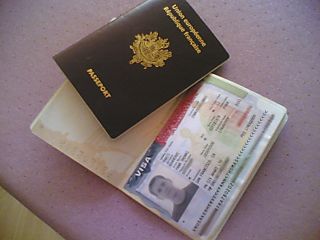Great News for U.S. EmployersEmployment-Based Immigration Doubles on October 1st
The new government fiscal year which starts on October 1, 2021 will be the best year ever for employment-based immigration.
Generally, 140,000 persons annually are able to get green cards through employment-based immigration. However, in the coming fiscal year, the number will more than double to over 290,000.
Why?
Because of the pandemic, U.S. Embassies abroad have been mostly closed, and this has prevented well over 150,000 relatives of U.S. citizens and green card holders from getting green card interviews. Our immigration laws provide that if the family-based quota of 226,000 is not reached, the unused numbers are transferred to the employment-based categories during the next fiscal year.
Client Reviews

Great Work!
“We are very pleased by the services we get from the Law Offices of Carl Shusterman. Our experience in the past year with all our H1B renewals has been amazing, and we’ve obtained great results.”
- KRG Technologies
Read More Reviews
Zoom Consultations Available!
Doubling Employment-Based Immigration – Who Benefits?
U.S. employers sponsor may thousands of computer programmers and health care professionals for green cards each year.
Here is a simple example of how U.S. employers will benefit when employment-based immigration numbers more than double on October 1, 2021.
Hospitals across the United States are suffering from a huge shortage of doctors, nurses and other allied healthcare professionals.

Although hospitals have sponsored hundreds of thousands of registered nurses from the Philippines during the past 50 years, as recently as 2015, the waiting time for getting a green card for a Filipino RN was over 7 years. Few hospitals want to sponsor a nurse that they cannot employ for 7 years.
However, now the EB-3 employment-based immigration category for most foreign-born professionals to get green cards is “current”, meaning that the wait is only as long as it takes to get the government to process the paperwork for the nurse or other professionals.
For an RN, the process starts when the U.S. employer files a form I-140 visa petition with the USCIS. While this process can take months, if the employer elects to use premium processing, the visa petition can be approved in a matter of weeks.
Second, the approved petition is forwarded by the USCIS to the National Visa Center (NVC) in New England. The NVC then requests various pieces of paperwork from the nurse. If the hospital’s immigration attorney has obtained green cards for nurses in the past, he/she has already informed the hospital and the nurse of the required paperwork, and can send it to the NVC as soon as it is requested.
The final step is for the NVC to coordinate with the US Embassy/Consulate in the RN’s home country to schedule the nurse, and her spouse and children, for green card interviews. Once their green card applications are approved, the nurse and her family are free to seek admission to the U.S.
Professionals born in India and China who have temporary working visas, and are waiting for their priority dates to become current will also benefit. The addition of another 150,000 employment-based immigration green cards will help reduce the backlogs (although Congress needs to abolish the ridiculous per-country quotas).
The PERM Application
It should be noted that since registered nurses are designated as a shortage occupation by the U.S. Department of Labor (DOL), the employer is not required to advertise the job and show that there are no U.S. workers qualified for the job.
However, for most other occupations, the employer is required to do so. This is known as the PERM process.
The PERM, or labor certification, process is designed to ensure that the admission of foreign workers to work in the U.S. will not adversely affect the job opportunities, wages and working conditions of U.S. workers.
Once a U.S. employer advertises the job and demonstrates to the DOL that it is paying the prevailing wage and that no qualified U.S. workers have applied for the job, the DOL will approve the PERM application. This process typically takes between 7 and 10 months.
As soon as the PERM application is approved, the employer submits an I-140 visa petition to the USCIS. If the professional has a temporary work visa and his/her priority date is current, he/she may file for adjustment of status simultaneously.
What This Means for US Employers
Most foreign-born professionals who are sponsored for green cards by U.S. employers are already working in the U.S. using temporary work visas.
This enables them to bypass the NVC and the U.S. Embassy and simply apply for adjustment of status to get their green cards without having to leave the U.S.
However, since there are no temporary work visas for RNs, to get green cards, they must be interviewed at U.S. Embassies/Consulates in their home countries.
At the moment, U.S. Embassies and Consulates abroad are operating at limited capacity due to the COVID pandemic.
However, since employment-based immigration will more than double this coming fiscal year, and since most foreign-born professionals can adjust status without having to leave the U.S., we strongly recommend that U.S. employers take advantage of this once-in-a-lifetime opportunity.
